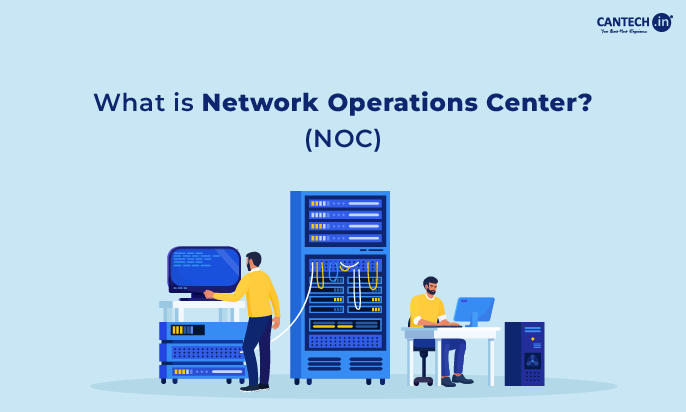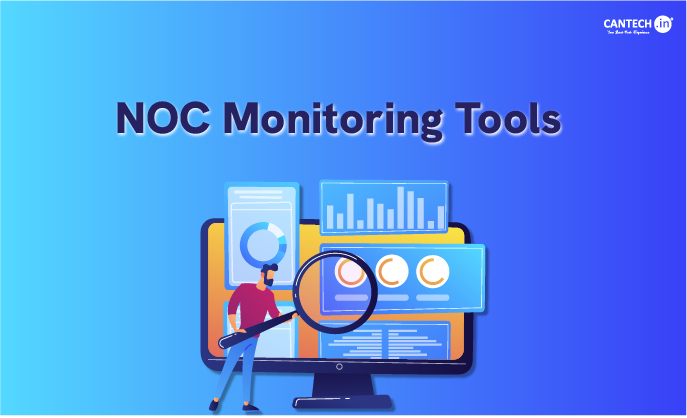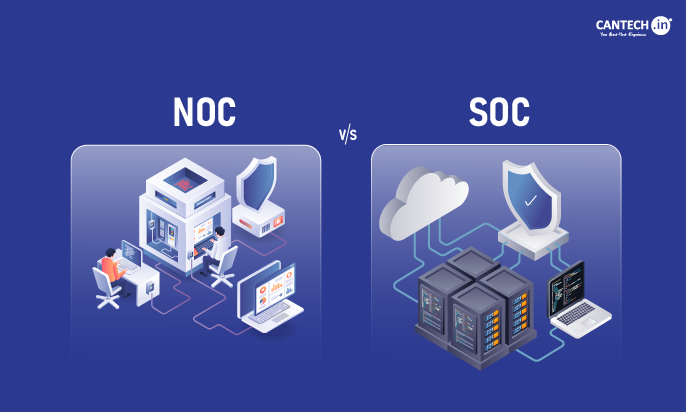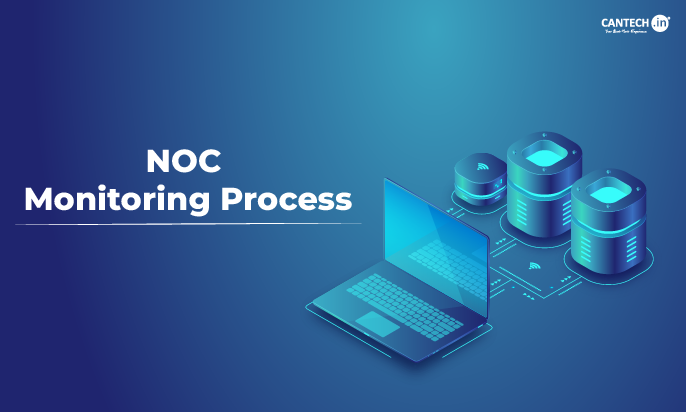A Network Operations Center (NOC) is a main facility, where crucial tasks of monitoring and controlling computer, telecommunications and satellite networks are conducted to ensure uninterrupted network availability. Thus it supports business continuity across various sectors.
What is a Network Operations Center?
A Network Operations Centre is a main hub where professionals of Information Technology monitor, manage and maintain organization’s network infrastructure. It is responsible to ensure security, optimal network performance, and uptime by detecting and resolving issues quickly. Besides this, it serves as the first line of defense against network irregularities by operating 24/7 to detect and address the issues. By providing real time insights on network performance, NOC’s facilitate proactive management, help business organizations maintain operational continuity and meet SLA’s.
Key Functions of a Network Operations Center (NOC)
The NOC acts as a focal point to ensure efficient network performance and security. Here are some of the key function of NOC:
Monitor Networking
NOC personnel maintain constant surveillance over servers, networks and applications to identify anomalies or potential problems before they disrupt operations. Proactive surveillance systems detect anomalies at an early stage which permits rapid interventions to sustain peak performance while avoiding service disruptions. Advanced monitoring tools deliver real-time data which enables instant reactions to developing issues.
Incident Response
The NOC initiates immediate response actions to identify and fix problems whenever network incidents like outages, security breaches or performance degradations happen. Effective rapid response mechanisms reduce service interruptions by addressing disruptions promptly to restore normal operations and maintain service quality. The operation of this function serves as an essential mechanism to uphold both the dependability and accessibility of network services.
Performance Management
The NOC examines multiple network performance indicators to enhance operational effectiveness and resource management. The process involves evaluating bandwidth usage together with latency and throughput to verify adherence to service level agreements (SLAs). The NOC detects performance bottlenecks and makes necessary adjustments to ensure the network runs at maximum efficiency to meet organizational demands.
Security Management
A fundamental responsibility within NOC operations involves the implementation and supervision of security measures. The task requires operating firewalls and intrusion detection systems while performing vulnerability assessments to shield networks from cyber threats. The NOC performs relentless surveillance to detect security violations and unauthorized access attempts, which enables it to protect sensitive data while preserving network infrastructure integrity.
Configuration Management
The NOC engages in continuous maintenance and revision of network configurations to achieve consistency while adhering to compliance standards and maintaining peak performance. The process encompasses the documentation of network settings alongside managing configuration alterations while ensuring all devices function with compatible and secure setups. Effective configuration management prevents conflicts and errors.
Reporting and Documentation
The production of standard network performance reports alongside incident documentation and critical metric analyses stands as a fundamental requirement for decision-making processes. The Network Operations Center meticulously records every activity to deliver stakeholders detailed network health insights which support strategic planning efforts. Comprehensive documentation assists compliance audits while enabling long-term effectiveness tracking of implemented solutions.
What are the Requirements of a NOC?
NOC requires the integration of multiple essential components such as:
1. Infrastructure
- Physical Space: An exclusive secure zone featuring climate control systems and ergonomic workstations alongside expansive displays or video walls for real-time network surveillance.
- Power Supply: Uninterruptible power supplies (UPS) and backup generators enable continuous operations during power outages without interruption.
- High-Speed Connectivity: Network connections designed to be both reliable and redundant enable continuous monitoring and management capabilities without interruption.
2. Technology and Tools
- Network Monitoring Systems: Sophisticated tools deliver instantaneous network performance data while identifying irregularities and notifying personnel about possible problems.
- Security Information and Event Management (SIEM) Systems: Complex platforms designed to collect and examine security logs to detect threats and initiate rapid response measures.
- Automation Tools: Software solutions that perform routine tasks like patch management and backups without human intervention to boost efficiency.
- Communication Systems: A combination of specialized incident tracking systems and collaboration platforms enables rapid information dissemination and coordinated responses.
3. Personnel
- Network Engineers and Technicians: Professionals who can conduct network performance monitoring while simultaneously addressing problems through troubleshooting methods and solution implementation.
- Security Analysts: Specialists dedicated to detecting and neutralizing security threats to safeguard organizational data and infrastructure.
- Incident Response Team: Experts who can manage critical situations to enable swift recovery while reducing operational disruption.
- Support Staff: Individuals responsible for executing administrative duties managing documentation and facilitating team coordination across multiple groups.
4. Continuous Improvement
- Training and Development: Staff that continuously participate in education programs that ensure they remain current with the latest technologies, threats and best practices for NOC.
- Performance Metrics: The systematic evaluation of key performance indicators (KPIs) occurs regularly to determine NOC effectiveness while pinpointing potential improvement areas.
- Feedback Loops: Mechanisms that collect insights from both incidents and daily operations which then help refine processes while boosting overall performance.
5. Processes and Procedures
- Standard Operating Procedures (SOPs): Extensive directives defining regular tasks alongside incident management steps, escalation procedures, and communication methods.
- Effective Incident Management: Established processes for identifying, categorizing, prioritizing, and resolving network incidents efficiently.
- Change Management: Controlled procedures to manage network changes which ensure minimal disruption while maintaining system integrity.
- Security Policies: Industry standards and regulations serve as the backbone for data protection and security measures while simultaneously sustaining stakeholder confidence.
The integration of Network Operations Center NOC best practices stands as a fundamental requirement to achieve both optimal network performance and organizational success. Effective approaches involve establishing multi-level support frameworks alongside persistent network system surveillance while tracking essential operational metrics and formulating strong hiring and retention plans. By implementing these practices organizations can achieve greater network reliability while shortening incident response times and sustaining their competitive position in the digital market.
Elevate Your Business with Cantech’s Expert Server Management Services
Cantech specializes in extensive server management services, so that your business operations run smoothly and securely. Our offerings include:
- Professional Support: Get advantage from 24/7 monitoring and maintenance by our qualified technicians, ensuring your servers are always optimized.
- Enhanced Security: Protect your digital assets with our proactive security measures, safeguarding your business against potential threats.
- Cost-Effective Solutions: Save time and resources with our scalable services tailored to meet your specific needs.
Contact us today to learn more and get started right away!
FAQ’s
What is NOC Monitoring?
NOC Monitoring means keeping a close watch on a network’s working condition from a central operations center. The main aim of NOC monitoring is to keep the network available and working well by finding problems quickly, fixing them along with doing tasks like updating software or managing network traffic.
What is an example of a network operations center?
Examples include mobile phone operator’s service management, large communication networks operated by big companies or nations traffic control centers, emergency service networks and utility provider systems.
What is the main purpose of the NOC?
A Network Operations Center (NOC) functions as a centralized facility where organizations monitor and manage their network infrastructure to maintain optimal performance and availability. Network components undergo continuous oversight while incident response occurs rapidly to minimize downtime and proactive measures are taken to prevent potential issues.




